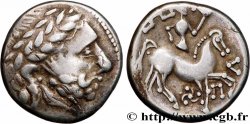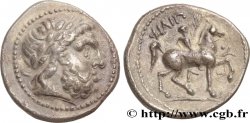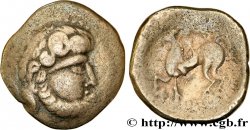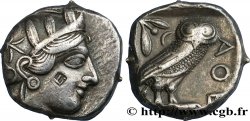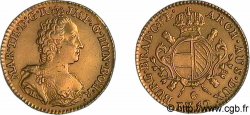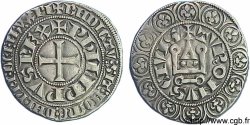v43_1195 - CELTI DEL DANUVIO Tétradrachme au cavalier sans bras
MONNAIES 43 (2010)
Prezzo di inizio : 380.00 €
Valutazione : 600.00 €
Prezzo realizzato : 473.00 €
Numero di offerte : 4
Offerta maxima : 473.00 €
Prezzo di inizio : 380.00 €
Valutazione : 600.00 €
Prezzo realizzato : 473.00 €
Numero di offerte : 4
Offerta maxima : 473.00 €
Tipo : Tétradrachme au cavalier sans bras
Data: (IIe-Ier siècles avant J.-C.)
Metallo : argento
Diametro : 22 mm
Asse di coniazione : 8 h.
Peso : 13,32 g.
Grado di rarità : R2
Commenti sullo stato di conservazione:
Très bel exemplaire, frappé sur un flan un peu court et épais. Frappe centrée et vigoureuse, avec un beau brillant de frappe des deux côtés et une fine patine irisée
N° nelle opere di riferimento :
Pedigree :
Cet exemplaire a été acheté 525$ chez Freeman & Sear
Diritto
Titolatura diritto : ANÉPIGRAPHE.
Descrittivo diritto : Tête laurée de Zeus à droite ; grènetis.
Rovescio
Titolatura rovescio : ANÉPIGRAPHE.
Descrittivo rovescio : Cavalier au pas à droite ; le cheval lève l'antérieur gauche ; aucun ornement entre les jambes du cheval.
Commento
Si le statère d’or de Philippe II de Macédoine a servi de prototype à de nombreuses imitations gauloises, le tétradrachme n’a pas été imité en Gaule, mais reste principal sujet d’inspiration des monnaies pour les Celtes du Danube (LT. 9697-9767, 9768-9832, 9618-9630, 9870-9886). Les premières imitations furent frappées dans le premier quart du IIIe siècle avant J.-C. La fabrication des copies serviles, puis des imitations, enfin des frappes celtiques continuèrent pendant plus de deux siècles.
While the gold stater of Philip II of Macedon served as a prototype for many Gallic imitations, the tetradrachm was not imitated in Gaul, but remained the main source of inspiration for coins for the Danube Celts (LT. 9697-9767, 9768-9832, 9618-9630, 9870-9886). The first imitations were struck in the first quarter of the 3rd century BC. The manufacture of servile copies, then imitations, and finally Celtic strikes continued for more than two centuries.
While the gold stater of Philip II of Macedon served as a prototype for many Gallic imitations, the tetradrachm was not imitated in Gaul, but remained the main source of inspiration for coins for the Danube Celts (LT. 9697-9767, 9768-9832, 9618-9630, 9870-9886). The first imitations were struck in the first quarter of the 3rd century BC. The manufacture of servile copies, then imitations, and finally Celtic strikes continued for more than two centuries.








 Segnalare un errore
Segnalare un errore Stampate la pagina
Stampate la pagina Condividi mia selezione
Condividi mia selezione Fai una domanda
Fai una domanda Consegnare / vendere
Consegnare / vendere
 Descrittivo
Descrittivo